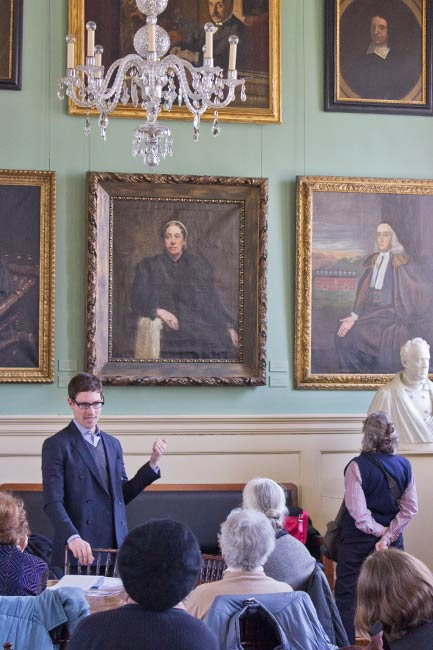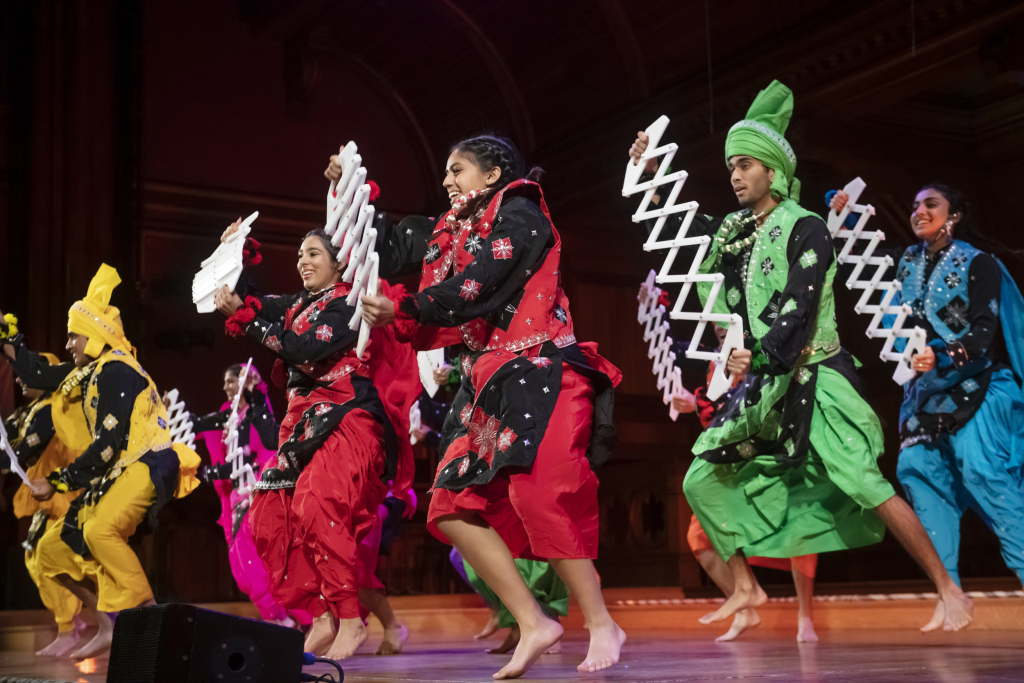The Harvard Portraiture Exhibition stands as a powerful testament to the intersection of art and activism, showcasing the impactful works of Robert Shetterly and the Harvard Foundation for Intercultural and Race Relations. This exhibition not only pays homage to renowned women changemakers and civil rights icons but also amplifies the narratives of those often overlooked by history. With portraits highlighting figures such as Pauli Murray and Rosa Rios, the exhibition dives deep into the stories of courage and resilience that inspire hope and change. As Shetterly’s “Americans Who Tell the Truth” series coalesces with the Harvard Portraiture Project, viewers are encouraged to reflect on the vital contributions made by these leaders in the ongoing fight for social justice. By intertwining art with activism, the Harvard Portraiture Exhibition becomes a canvas for conversations about representation and the enduring quest for equality.
Renowned for its focus on significant historical figures, the Harvard Portraiture Exhibition exemplifies the transformative power of visual storytelling. This unique event celebrates the lives and legacies of extraordinary personalities who have forged paths for change and social equity. Through evocative portraits and accompanying narratives, the exhibition invites us to engage with the histories of civil rights advocates and trailblazing women who have influenced society profoundly. By fostering an environment where art meets advocacy, the exhibition paves the way for a richer understanding of the sacrifices made for progress. As we honor these groundbreaking contributors, the exhibition sparks meaningful dialogue on the relevance of their work today.
The Impact of Robert Shetterly’s Portraits
Robert Shetterly’s portraits are not just artistic representations; they embody powerful narratives that resonate with social activism and historical significance. Through his series “Americans Who Tell the Truth,” Shetterly highlights individuals who have exemplified courage, often at the cost of personal risk. His approach to portraiture serves as a profound form of storytelling that amplifies the voices of those traditionally marginalized in society. By depicting civil rights advocates and changemakers, he invites viewers to engage with history and the ongoing struggles for justice and representation.
Each portrait created by Shetterly is infused with a sense of urgency and relevance, connecting past and present. The artist meticulously chooses quotes that encapsulate the essence of his subjects, offering insight into their motivations and resilience. For instance, his portrayal of civil rights activist Pauli Murray reflects not only her contributions but also the complex intersectionality of gender and race, showcasing the multifaceted nature of social justice work. This innovative fusion of visual art and activism fosters a deeper understanding of the individuals behind the history, urging society to acknowledge their legacies while inspiring future generations.
Harvard Foundation Portraiture Project: Celebrating Diversity
The Harvard Foundation Portraiture Project aims to diversify the representation of individuals on campus by showcasing notable figures who have made significant contributions to society. This initiative aligns with the core values of the university, emphasizing inclusivity and the importance of recognizing the diverse identities that shape our collective history. The exhibition titled “Seeing Each Other” unites portraits from the Harvard Foundation alongside those from Shetterly’s series. It serves as a powerful reminder of the need for representation, especially of women changemakers who have often been overlooked in historical narratives.
Featuring luminaries such as Rosa Rios and Regina Jackson, the project reflects the commitment of the Harvard Foundation to uplift marginalized voices within the academic community. As students and visitors engage with these portraits, they are invited to reflect on the broader implications of representation in leadership roles and social movements. The conversation sparked by these portraits emphasizes the shared responsibility for progress, fostering solidarity among all individuals in the quest for justice and equity.
Women Changemakers: Honoring Trailblazers
The exhibition pays special tribute to women changemakers who have played pivotal roles in advancing civil rights and social justice. Figures like Sherrilyn Ifill and Eileen Southern are celebrated not only for their professional achievements but also for their unwavering commitment to effecting positive change in their communities. By highlighting these trailblazers, the exhibition emphasizes the critical contributions of women in movements that strive for equality and justice, challenging the historical narratives that often downplay their significance.
Women changemakers are increasingly recognized for their leadership and advocacy, and events like Women’s Week at Harvard provide a platform for their stories to be told. These portraits serve as visual testimonials, reminding viewers that the fight for gender equity has always been interconnected with broader struggles for social justice. As Habiba Braimah stated during the exhibition, progress is achieved through collective advocacy and solidarity, reinforcing the notion that women’s empowerment is essential for meaningful societal change.
Art and Activism: A Dynamic Relationship
The dynamic interplay between art and activism is central to the mission of both Robert Shetterly and the Harvard Foundation Portraiture Project. By utilizing portraiture as a medium for social commentary, these artists engage viewers in a dialogue about important social issues, encouraging reflection and action. The incorporation of quotes into Shetterly’s paintings further enriches this dialogue, inviting audiences to connect emotionally with the subjects, their struggles, and their triumphs.
Artistic expressions serve as powerful vehicles for social change, blending creativity with advocacy. Exhibitions like “Seeing Each Other” blend visual storytelling with critical discussions about representation and equity. This synergy of art and activism not only honors the individuals portrayed but also galvanizes viewers towards action, instilling a sense of responsibility to continue the fight for justice and equality, inspired by the stories and legacies they encounter.
Transforming Public Perception Through Portraiture
Portraits have the unique ability to transform public perception by capturing the essence of an individual’s character and contributions. Shetterly’s approach encourages viewers to see beyond the surface, facilitating a deeper understanding of the subjects’ lives and legacies. In doing so, his portraits challenge viewers to confront societal issues and engage with the histories of marginalized communities, fostering empathy and advocacy for change.
Through the lens of the Harvard Foundation Portraiture Project, the exhibition amplifies the importance of presenting diverse narratives within public spaces. By showcasing the portraits of influential figures on campus, the project acts as a catalyst for reflecting on who is celebrated in history and why. This transformation of public perception is vital in cultivating a more inclusive narrative that honors the experiences of all individuals who have fought for justice, thereby enriching the dialogue around representation in contemporary society.
Creating Immortality Through Artistic Representation
Artists like Stephen Coit and Robert Shetterly achieve a sense of immortality for their subjects through careful and thoughtful representation. By engaging with those they paint, artists create portraits that not only reflect the likeness of the subjects but also encapsulate their stories and aspirations. This approach honors their legacies, ensuring that their contributions to society are remembered and celebrated within the art community and beyond.
The notion of creating immortality through art goes hand in hand with the mission of the Harvard Foundation Portraiture Project, which seeks to document the lives and achievements of influential figures. By capturing these narratives in a visual format, the project serves as a lasting testament to the impact of these individuals, promoting a culture of recognition and appreciation for those who have paved the way for future generations.
Engaging the Community Through the Exhibition
The exhibition at Cabot House acts as a significant engagement point for the Harvard community, encouraging dialogue and connection around themes of representation and activism. By welcoming a diverse audience, the exhibition facilitates discussions that resonate with contemporary issues of identity, equity, and justice. Initiatives like this create a space for collaborative reflection, inviting community members to consider their roles in supporting social change.
Engaging the community is essential in fostering a culture of activism that extends beyond the walls of galleries and exhibitions. Through the showcasing of portraits and impactful stories, artists and curators alike aim to inspire attendees to think critically about their own voices and contributions to society. This communal engagement reaffirms the belief that art can inspire action and cultivate a more informed and compassionate society.
Reflections on Courage and Activism
The portraits within this exhibition prompt reflections on the courage exhibited by changemakers throughout history. Each brushstroke not only reveals the likeness of the individuals portrayed but also serves as a mirror for society, urging viewers to recognize their struggles against oppression and their contributions to social justice. Through Shetterly’s work, viewers are invited to consider their roles in continuing the legacy of activism, courage, and hope.
In this context, the power of art lies in its ability to evoke emotions and provoke thought, encouraging audiences to reflect on the broader themes of justice and advocacy. As individuals engage with these portraits, they are challenged to confront their perceptions and biases, encouraging a dialogue that moves beyond mere observation, fostering a deeper commitment to understanding and change.
The Future of Portraiture in Social Advocacy
As society continues to confront complex social issues, the role of portraiture in advocacy remains critical. Exhibitions like the “Seeing Each Other” showcase how artistic representation can influence public discourse, promote awareness, and foster community engagement. The future of portraiture lies in its ability to adapt, embrace new narratives, and challenge existing paradigms, making it a powerful ally in the ongoing quest for justice and equality.
Artists like Robert Shetterly and Stephen Coit will undoubtedly continue to shape the conversation around representation and advocacy through their works. By drawing connections between past and present, these artists are not only documenting history but also inspiring a new generation of advocates to harness the power of art as a medium for change. The enduring impact of portraiture in social advocacy is a testament to its ability to unite, inform, and motivate individuals toward collective action.
Frequently Asked Questions
What is the Harvard Portraiture Exhibition?
The Harvard Portraiture Exhibition is an art showcase that features the works of Robert Shetterly and the Harvard Foundation Portraiture Project. It aims to elevate the voices of overlooked changemakers, particularly through its striking collection of civil rights portraits and representations of influential women changemakers.
Who are some of the featured artists in the Harvard Portraiture Exhibition?
The Harvard Portraiture Exhibition features Robert Shetterly, known for his ‘Americans Who Tell the Truth’ series, and Stephen Coit, an artist associated with the Harvard Foundation Portraiture Project. Both artists create portraits that tell powerful stories of courage and activism.
How does the Harvard Portraiture Exhibition address representation issues?
The Harvard Portraiture Exhibition, through the efforts of the Harvard Foundation, addresses representation issues by diversifying the portraits displayed on campus. This initiative highlights the contributions of women changemakers and civil rights activists, aiming to broaden the narrative of history and inclusion.
During which event was the Harvard Portraiture Exhibition ‘Seeing Each Other’ showcased?
The exhibition ‘Seeing Each Other’ was showcased during Women’s Week, featuring portraits of influential female figures, including civil rights activist Pauli Murray and former U.S. Treasurer Rosa Rios, highlighting their contributions to social justice and gender equity.
What themes are explored in the Harvard Portraiture Exhibition?
The Harvard Portraiture Exhibition explores themes of hope, change, and the importance of how we perceive others through the lens of art and activism. It encourages viewers to engage deeply with the stories behind the portraits, fostering an appreciation for the courage of changemakers.
What is Robert Shetterly’s motivation behind his portrait series?
Robert Shetterly’s motivation for his portrait series ‘Americans Who Tell the Truth’ stems from a desire for social change. Inspired by political disillusionment, he began painting figures who exemplify courage and activism, aiming to inspire others through their stories.
How can visitors engage with the portraits at the Harvard Portraiture Exhibition?
Visitors to the Harvard Portraiture Exhibition are encouraged to engage with the portraits by taking time to reflect on the quotes inscribed by each subject, as well as contemplating the significance of their contributions to social justice and civil rights.
What role does the Harvard Foundation play in the Harvard Portraiture Exhibition?
The Harvard Foundation plays a pivotal role in the Harvard Portraiture Exhibition by supporting the inclusion and promotion of diverse portraits that highlight the achievements of women and minority changemakers, thereby enhancing cultural awareness and representation on campus.
How has the format of the Harvard Portraiture Exhibition changed over time?
The format of the Harvard Portraiture Exhibition has evolved, now incorporating more interactive elements and thematic narratives that allow the audience to delve deeper into the stories of civil rights activists and women changemakers, moving beyond traditional static displays of art.
Why are quotes included in Robert Shetterly’s portraits?
Quotes are included in Robert Shetterly’s portraits to amplify the voices of the subjects and encourage viewers to reflect on their messages. The quotes are carved into the wood, providing a tactile connection to the subject’s thoughts and enhancing the emotional impact of the artwork.
| Key Point | Details |
|---|---|
| Artist Background | Robert Shetterly ’69 and S. Allen Counter initiated portrait projects for social change. |
| Exhibit Theme | The exhibition explores hope, change, and elevation of overlooked voices through portraiture. |
| Artistic Approach | Shetterly emphasizes the significance of courage in subjects and incorporates quotes to encourage viewer engagement. |
| Featured Subjects | Spotlights include female changemakers like Pauli Murray and Rosa Rios, as well as W.E.B. Du Bois. |
| Collaboration | Partnership between the Harvard Foundation and the Office for the Arts facilitated the exhibition. |
| Legacy | Shetterly’s collection has grown from 50 to over 200 portraits, emphasizing the ongoing impact of visual storytelling. |
Summary
The Harvard Portraiture Exhibition highlights the importance of storytelling through art as it honors courage and amplifies marginalized voices. The collaboration between prominent artists such as Robert Shetterly and initiatives like the Harvard Foundation showcases a commitment to social change and gender equity. Through poignant portraits and powerful narratives, this exhibition provides visitors with a profound opportunity to engage deeply with history and contemporary issues in the pursuit of justice and representation.



